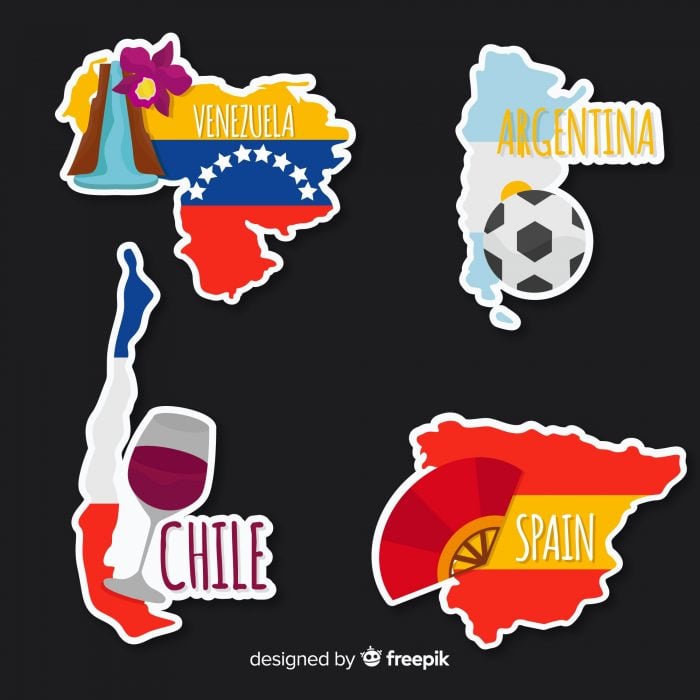Castilian vs Spanish: The Main Differences Between Castellano and Español
As soon as Americans arrive in London, they start to notice some curious linguistic differences between British and American English. At the airport, for example, they might have to take a lift instead of an elevator. Then, to get to their hotel, they have to get on the underground, where they might notice some passengers eating biscuits or chips. All these differences, rather than making the two varieties unintelligible, are interesting curiosities that in no way impede or even hinder mutual understanding.
The same can be said about Castilian and Latin American Spanish. The differences between these two varieties, though they are worth exploring, by no means make the two mutually unintelligible. To prove this, we have narrowed down the differences between the two types for you.
Below, you will find a list of the main dissimilarities between Castilian Spanish and Latin American Spanish.
Take a Free Trial Spanish class online with a qualified native tutor of your preferred dialect!
What Is Castilian Spanish?
Before we head into our “Castilian vs Spanish” list, we need to make sure you understand what we mean by Castilian Spanish.
Castilian Spanish, also known as Peninsular Spanish, is the variety of Spanish originally spoken in northern and central Spain. Today, however, the term castellano is used more generally to refer to the Spanish spoken in all of Spain in opposition to Spanish spoken in Latin America, regardless of regional differences.
Castilian vs Spanish (Español) – Are They Really That Different?
Vosotros / Ustedes
In Castilian Spanish, speakers can choose between two different 2nd person plural forms: vosotros and ustedes. This choice will depend on the level of formality that is expected in any given situation. For example, a headteacher talking to a group of parents might say something like “Ustedes han sido convocados para hablar sobre el episodio del viernes pasado”. (You’ve been called here to discuss last Friday’s events).
Last Friday, however, the hall monitor might’ve been heard saying the following while talking to a group of students: “¿Vosotros habéis arrojado el teléfono del señor Cano en el inodoro?” (Is it you who threw Mr. Cano’s phone into the toilet?).
Latin American Spanish doesn’t present such a distinction. In fact, the vosotros form disappeared from all Latin American countries altogether as early as the 19th century. Consequently, regardless of the relationship or level of familiarity between the speakers, the form ustedes will always be used in Latin American Spanish when referring directly to a group of two or more people.
Tú / Usted / Vos
Following on from what we explained above, it’s easy to imagine that usted is a more formal choice than tú. If you were in Spain, you would be completely right. Indeed, usted is the form that people would use to refer to an elderly person, or to someone that they want to be especially polite with.
In Latin America, however, this rule cannot be applied consistently to every country. Whereas countries such as Argentina use usted in the same way Spanish people do, in other cultures you will find that most people also use this form to address their direct family or even their friends. In the Colombian show Betty la Fea, this usage is can be found in almost every scene:
Until fairly recent times, usted was also commonly used among lovers as a sign of courtship and respect, as seen in this classic bolero famously sung by Luis Miguel:
And then there is vos, the singular 2nd form used in Argentina, Uruguay, and Paraguay. In these countries, when addressing a single person (single as in singular, not as in unmarried!) people use this variation of tú to express familiarity or informality.
Seseo
Seseo is a phonological variation in which the letter <c> is pronounced as the initial sound in “think” in Castilian Spanish. As a result, the words centro (center) and cilantro are pronounced as “thentro” and “thilantro”. The grapheme <z>, in turn, is pronounced as /th/ in all contexts.
In Latin American Spanish, this pattern is not found anywhere. In countries like Argentina, all <z>, <s>, and <c> before <i> and <e> are produced with a /s/ sound. As a consequence, words like siento (I feel) and ciento (one hundred) have the same pronunciation.
This means that the distinctive Castilian /th/ sound in words like zorro (fox) and zapato (shoe) is non-existent in Latin American countries.
A good example of this can be found in the song “Miro la vida pasar”, peformed by Fangoria, from Spain, and Miranda!, from Argentina. While Miranda!’s singer says indiferencia (indifference) and pereza (laziness) with a /s/ sound, Fangoria’s singer pronounces a veces (sometimes) and cabeza (head) with a /th/ sound.
Collaborations of this kind are great Castilian vs Spanish lessons that you can use to practice all the differences mentioned above.
Would you like to know more about Spanish? Then make sure you check our post on the 7 facts about Spanish that you probably didn’t know. Also visit our blog in Spanish to learn more about the languages spoken in Spain.
Also, if you are moving to a Spanish-speaking country, we suggest you explore our personalized Online Courses. Our native tutors will pair you up with a teacher who speaks the variety that is spoken where you’re going.
Finally, If you enjoy the social aspect of language-learning, you might want to check our Open Group Courses as well.
Take a Free Trial Spanish class online with a qualified native tutor of your preferred dialect!
Editor’s note: Article updated on July 29, 2021.

